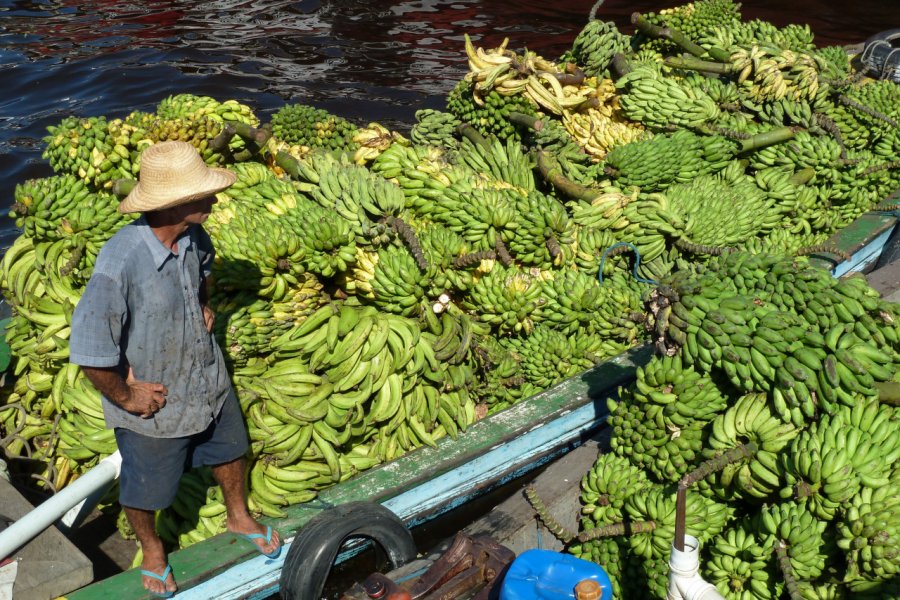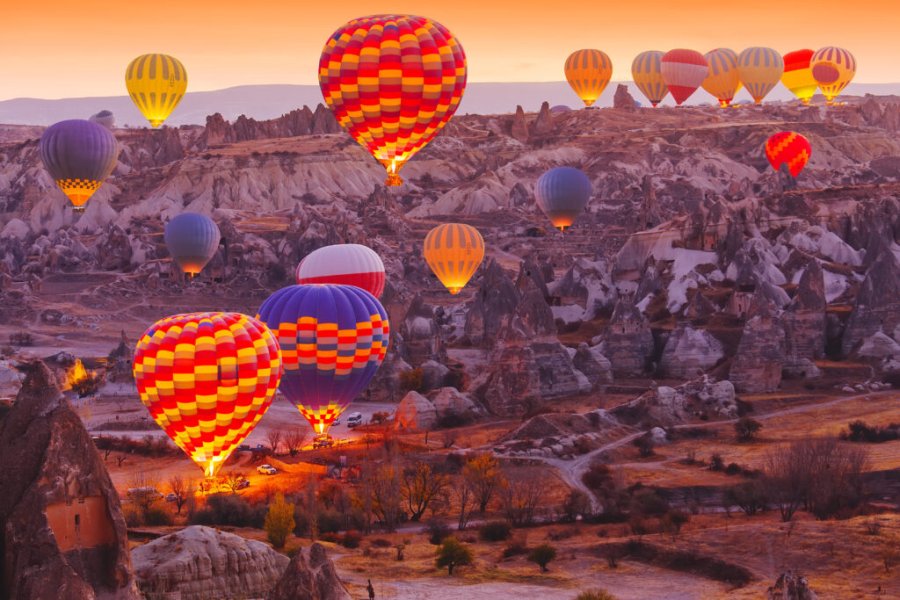Travel Guide Amazonie Brésilienne
It is the lung of our planet. A sensitive natural space in South America, the Amazon covers the vast plain of the Amazon basin, a region watered by the Amazon River and its tributaries, including the gigantic Rio Negro. The Amazon is largely occupied by the Amazon rainforest even though its surface area is, unfortunately, getting smaller and smaller. It is one of the wettest regions on the planet, varying from savannah to flooded forest, making it the richest biodiversity in the world. It is the last refuge of the jaguar, the harpies, the giant otter and several diurnal raptors, and is home to 10% of all species in the world. Spread over nine countries, the Amazon is for 63% in Brazil - in the north-east of the country -, 10% in Peru, 7% in Colombia. It represents in surface, half of the tropical forests of the world. It is responsible for the production of 15% of river water. In addition, by absorbing CO2, it slows down climate change. It is by following the forest roads and footpaths and by paddling on a dugout canoe or during a cruise on the Amazon that you will best apprehend the richness of this wild destination. Program hikes with bivouac in ecolodge for a total immersion. But be accompanied by a local guide for more security. The visit of Manaus, capital of the region at the confluence of the Amazon and the Rio Negro in Brazil, also has its charm. The meeting with the hunter-gatherer populations who live in the forest is also a great moment. And you are not forbidden to go to the beach in the Amazon! There are heavenly beaches on the Atlantic Ocean where you can put your towel down, including Pria da Lua, on the way to which you will stop at the Museo do Seringal of Vila Paraiso, a former rubber plantation. We can't advise you enough to leave with your travel guide.
What to visit en Amazonie Brésilienne?
Suggested addresses de Amazonie Brésilienne
When to go to en Amazonie Brésilienne?
When to go to the Amazon? As Brazil is located in the southern hemisphere, the seasons are reversed compared to Europe. During the southern summer, from December to March, it is hot all over Brazil, even very hot in Rio and São Paulo. Generally speaking, Brazil can be visited with pleasure all year round and there is no best time to travel there even if the territory is so vast that it concentrates half a dozen different climates. In the Nordeste states, from December to March, there are frequent but brief showers. The period from June to December is the best time to travel in the Amazon. If you go to Brazil in February-March, you can attend the great Carnival of Rio de Janeiro which takes place every year during the 4 days preceding Ash Wednesday, the day after Shrove Tuesday. If you are there on the last weekend of June you can attend the Boi-Bumbá celebration, during the festival of Parintins, a small island in the Amazon, which attracts several hundred thousand people. It is the second largest popular event in Brazil after Carnival.
Weather at the moment
The Amazonian climate is hot and humid throughout the year. The average temperature in the Amazon is 25°C. The average rainfall is between 2,100 and 2,450 mm/year, with areas in the northwest reaching more than 10,000 mm/year. The country is divided into 5 major climatic zones. The North has a hot and humid equatorial climate, with rainfall practically all year round.
Brasiléia
Belém
Brazil is no longer a cheap country. During the summer vacations, from December to February (including the carnival period) and the school vacations in July, prices double or even more in Rio, Salvador, Recife or Olinda. The local currency is the real. In restaurants, service is included and represents 10% of the total amount.
There is no need to apply for a visa to travel to Brazil for a stay of less than 3 months, a passport valid for another 6 months is sufficient. To obtain an extension of 3 months, you must go with your passport to the federal police headquarters of the city where you are located. You just have to fill in some forms and pay a small fee.
There are no mandatory vaccinations before leaving for Brazil either, although it is strongly recommended to be vaccinated against yellow fever. We strongly advise against drinking tap water, which is rarely drinkable, throughout Brazil. Only use mineral water bottles after checking that they are well sealed or filtered water.
Practical information
- When to travel?
- Weather forecast
- Budget
- Formalities
- Health
- How to travel by yourself?
- How to get organized?
- Getting around
Media
How to go to en Amazonie Brésilienne? Our advice & tips
You will find many tour operators specialized on Brazil. They produce their own trips and are generally very good at giving advice because they know the country inside out. Note that their prices are often a little higher than those of generalist travel agencies. The tours usually combine one or more cities and rarely forget to visit the Iguaçu Falls.
There are direct flights to many cities in Brazil including Rio, Salvador de Bahia, São Paulo, Recife and Fortaleza. The price depends on the airline you use and, above all, on how long you book your flight. In order to get the best rates, it is essential to book well in advance. Think about buying your tickets a few months before your departure! Brazil lends itself well to independent travel with numerous bus and air links throughout the country.
Given the vastness of the Brazilian territory, the plane remains the best solution to criss-cross the country in all directions, but if you have time, the bus network covers the whole country with comfortable but sometimes interminable night trips and punctual departures. The road network is in good condition.
Find unique Stay Offers with our Partners
Pictures and images de Amazonie Brésilienne
Other destinations en Amazonie Brésilienne
- Belém
- Ilha Dos Papagaios
- Ilha Do Outeiro
- Ilha Do Mosqueiro
- Icoaraci
- Algodoal
- Salvaterra
- Soure
- Marapanim
- Bragança
- Santarém
- Alter Do Chão
- Macapá
- Serra Do Navio
- Oiapoque
- Manaus
- Presidente Figueiredo
- Boa Vista
- Porto Velho
- Rio Branco
- São Domingos Do Capim
- Viseu
- Floresta Nacional Do Tapajós
- Bosque Santa Lúcia
- Alenquer
- Monte Alegre
- Belterra
- Tefé
- Parque Nacional Do Pico Da Neblina
- Parque Nacional Da Amazônia
- Parintins
- Sitio Arqueológico Da Pedra Pintada


















